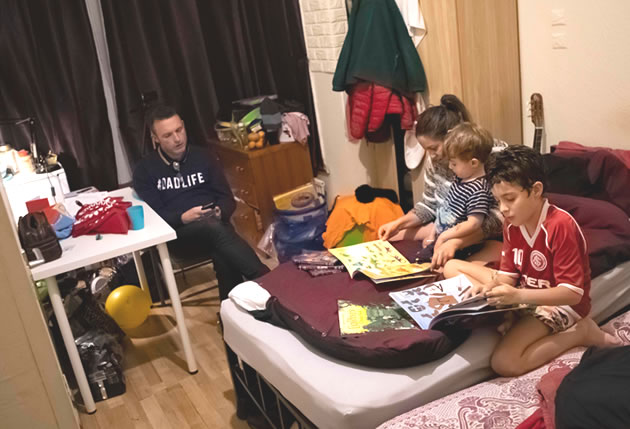Child Poverty Soars to Five Year High in London
Picture set to get worse due to economic impact of pandemic

Picture: Shelter
Child poverty in London has hit a five year high – with more than 100,000 more children below the poverty line last year than in 2014/15.
The number of children in the worst off families has risen 17 per cent from 617,000 to 724,000, according to figures from the Department for Work and Pensions.
And that picture is only set to worsen as the city feels the economic hit from coronavirus, an expert has warned today.
Laurence Guinness, chief executive of London charity the Childhood Trust, said the figures are even more concerning in light of Covid-19.
He said: “The scale of increase is alarming in and of itself but the trend is probably more alarming, particularly in the context of current events.”
Most people living in poverty in the capital are in work – and they will be vulnerable to job losses, temporary layoffs and pay cuts as the country locks down to fight the virus, he said.
“I think we’re going to see massive rent defaults and massive energy bill defaults – and a huge burden of debt on those who have no prospect of ever paying that debt back,” he added.
Mr Guinness believes the most vulnerable families in the capital will be “faring a whole lot worse” as the pandemic hits.
The latest figures show child poverty has risen in every London borough in the past five years.
But absolute poverty – the measure of most acute need – is rising faster in outer London than the city centre.
While Camden has seen the steepest rise in child poverty – up a third since 2014/15 – the other worst impacted boroughs are around the edge of the city.
Harrow (29 per cent), Hounslow (26 per cent), Kingston-upon-Thames (23 per cent) and Hillingdon (23 per cent) have all seen poverty spike.
That is because poorer families are being pushed out of inner boroughs as rent prices rise, according to Mr Guinness.
“We’ve seen a huge increase in housing costs and a reduction in affordable social housing, particularly in Inner London boroughs,” he said.
This creates a “doughnut effect” in which low income families are pushed to the suburbs – or further afield, to places like Northampton, Hastings and Grimsby – as prices rise.
The charity boss said housing costs are the “greatest driver of child poverty” in the capital.
And outer London boroughs typically have fewer job opportunities, so residents are more likely to pay to commute, he added.
Mr Guinness described London rental as an “unfettered market”, where the average tenancy costs more than £1,600 a month, and between 65 and 70 per cent of households living in poverty rent privately.
He claimed “successive Governments” over the past three decades have failed to address the housing crisis and tackle child poverty in the capital.
“If we’re able to build massive infrastructure projects like HS2 and Crossrail, there is no greater infrastructure a country has than its people,” he said.
But Mr Guinness believes coronavirus could change the way we think about poverty – because now “a lot of people who never thought of themselves as poor are in dire circumstances”.
Jessie Matthewson - Local Democracy Reporter
March 30, 2020
Related links
|